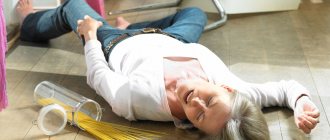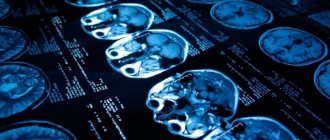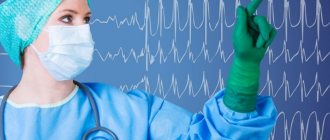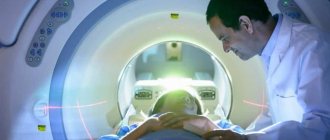Epilepsy (falling disease) is a fairly common pathology of the nervous system, the main manifestation of which is an epileptic seizure. An epileptic attack can be quite frightening and is characterized by loss of consciousness, the onset of seizures and, in some isolated cases, foam at the mouth. Sometimes it may take on a reddish tint.
To provide first aid, you do not need to have specific medical knowledge or skills. In most cases, the seizure goes away on its own; it is not necessary to call an ambulance. As a rule, a person who knows about his problems carries a note with the numbers of his relatives, friends, and information about himself, which may be useful to those who happen to be close to him.
However, people who want to help the victim should carefully perform first aid procedures, since the wrong procedure can cause serious harm to the patient.
People suffering from epilepsy should be regularly examined by a doctor, as the correct prescription of medications and constant monitoring of the disease reduce the risk of epileptic seizures. The Yusupov Hospital provides medical services from the best neurologists and epileptologists in the capital, who will select individual treatment for each patient.
Epilepsy and epileptic seizures are of completely different types and can manifest themselves in different ways. However, despite the variety, the attack always occurs suddenly. There are some signs by which you can determine an impending seizure, but this is not always possible. It is important for the person providing assistance to maintain inner calm and confidently carry out all necessary actions, since a person’s life is at stake.
Signs of an epileptic seizure
The mechanics of the occurrence of epilepsy has not been precisely clarified at the moment, but it is known that seizures begin against the background of intense stimulation of areas of the cerebral cortex due to increased electrical activity of nerve endings.
Signs of an attack, as a rule, vary from person to person, but there is a certain set of symptoms that helps determine the stage of the attack and immediately proceed to first aid procedures. Such crises cause great pain and stress to the patient, so after the seizure the victim must be handled very carefully.
Signs of an epileptic seizure include:
- sudden loss of balance, falling to the ground;
- loss of consciousness;
- nausea, vomiting;
- heavy breathing;
- muscle hypertonicity;
- inseparable loud shouting;
- a sharp increase in blood pressure;
- blood from the nose;
- involuntary throwing of the head back;
- “glass eyes”;
- increased salivation, sometimes with foam;
- loss of sense of reality of the surrounding world;
- disruption of the thinking process, misunderstanding of words or shouts of strangers;
- involuntary bowel movements or urination;
- local convulsions or convulsions of the whole body;
- numbness of the limbs;
- pupils stop responding to light;
- bluishness or redness of the face and other skin;
- very rapid pulse or its strong decrease;
- convulsions.
It is quite difficult to prevent an attack, but by certain indicators you can understand its approach and take the patient to a safe place.
Expert opinion
Author: Olga Vladimirovna Boyko Neurologist, Doctor of Medical Sciences
Doctors consider epilepsy one of the most dangerous neurological pathologies. This is because a seizure can occur at any time. This increases the risk of injury. Therefore, epilepsy requires timely diagnosis and treatment. The disease occupies a leading place in the structure of disability. According to statistics, 30% of patients are disabled people of group 1 or 2. In order to reduce the risk of injury during an epileptic attack, doctors have developed special first aid recommendations. Anyone can familiarize themselves with them.Doctors at the Yusupov Hospital diagnose and treat various forms of epilepsy. Modern European CT, MRI and EEG equipment are used for examination. This medical equipment allows you to quickly determine the localization of the pathological focus. The quality of treatment depends on the accuracy of the research. An individual therapeutic plan is drawn up by experienced neurologists and epileptologists. If you follow medical recommendations for the treatment and prevention of epileptic seizures, 60-70% of patients at the Yusupov Hospital achieve long-term remission.
Epilepsy
Epilepsy is a chronic, non-infectious disorder of the brain, manifested in the body's predisposition to the sudden onset of seizures.
Epilepsy is a fairly common disease. According to WHO, at least 50 million people in the world suffer from epilepsy. Among children under 16 years of age, this disease occurs in seven out of 1000, among adults - in one out of 200. Epilepsy can affect not only people, but also animals: dogs, cats, mice.
Diagnosis of epilepsy
The main method for diagnosing epilepsy is electroencephalography, that is, a graphic representation of electrical oscillations using electrodes placed on the surface of the skull.
EEG monitoring is considered the most informative, that is, taking an electroencephalogram for several hours, including periods of sleep and wakefulness.
In addition to EEG, MRI is used for diagnostic purposes.
Symptoms of epilepsy
There are about 40 forms of epilepsy and different types of seizures, they range from seizures throughout the body (generalized form) to subtle changes in the patient's condition. Epilepsy is characterized by a so-called aura - a harbinger of an attack, usually dizziness, a feeling of anxiety, fever, etc.
The most common symptoms of epilepsy:
- convulsions;
- weakness, sleep and appetite disorders,
- headache;
- increased irritability;
- visual, auditory, olfactory or gustatory hallucinations.
Neuroscientists divide epileptic seizures (attacks) into partial and generalized (convulsive and non-convulsive).
Partial attacks are characterized by twitching of facial muscles, short-term freezing in one position, redness of the face, a feeling of déjà vu, sudden rage or fear, and hallucinations.
Generalized convulsive seizures are the most frightening to others. The patient's body first stretches out, the muscles tense, the face turns pale, and the head falls back. Breathing becomes intermittent, the veins in the neck swell. After a few seconds, convulsions begin, during which the muscles of the body, limbs and neck move jerkily. Often, breathing becomes hoarse and noisy, and the tongue sinks. Foam is released from the mouth, often with blood, as the patient bites his cheek and tongue during an attack. Gradually, the cramps become weaker and stop, the body relaxes, and involuntary urination often occurs. The person may then fall into a long sleep.
After the end of the seizure, confusion, memory impairment, amnesia, and weakness may occur.
First aid for an epileptic attack:
- do not restrain the patient’s convulsions and movements;
- do not touch or move the patient to another place, except in life-threatening cases;
- do not unclench a person’s teeth during an attack;
- do not perform artificial respiration or cardiac massage;
- the patient should be placed on a flat surface and something soft should be placed under the head;
- to prevent the tongue from falling back and saliva from getting into the respiratory tract, the head of a lying person must be turned on its side; in case of vomiting, the whole body must be turned on its side;
- if the attack occurs for the first time, or lasts more than five minutes, or is accompanied by breathing problems, you should immediately call an ambulance.
First aid for epilepsy is extremely important, since prolonged attacks with severe convulsions can lead to injury and even death of the patient.
Treatment of epilepsy
Treatment of epilepsy completely stops seizures in 65% of cases and significantly alleviates them in another 20%. Systematic treatment allows the patient to lead a full life.
The most common treatment for epilepsy is medication in pill form. Only a doctor - a neurologist or epileptologist - can determine the dosage, duration of use and type of medication. It is very important for the patient to strictly follow the doctor’s recommendations and not suddenly stop taking medications.
In some cases, brain surgery is indicated.
There are other treatments for epilepsy, such as electrical stimulation of the vagus nerve (VNS therapy), performed using an implant - a pulse generator.
Complications:
- Status epilepticus occurs when seizures are so frequent between seizures that the patient does not regain consciousness between them. The functioning of the cardiovascular, respiratory and other systems of the body is disrupted, and death occurs if assistance is not provided;
- aspiration pneumonia: during an attack, the patient may inhale saliva, vomit, pieces of food, etc. As a result, an inflammatory process develops in the respiratory tract;
- neurogenic pulmonary edema: disturbances in the functioning of the nervous system lead to increased blood pressure and pulmonary edema, resulting in a lack of oxygen;
- sudden death during an attack; drowning during an attack while swimming, in other dangerous situations (crossing the road, riding a bicycle, etc.);
- injuries: dislocations and fractures of the limbs and spine, various injuries of the tongue and cheeks, radiculitis.
- mental disorders: patients with epilepsy often suffer from depression and isolation in society.
Prevention of epilepsy
In order to prevent attacks, the patient is advised to avoid smoking, drinking alcohol, strong tea and coffee, heavy food, poor sleep, avoid overheating and hypothermia, being at high altitude, as well as other negative environmental factors.
Epilepsy caused by birth trauma is prevented by proper childbirth techniques.
Epileptics are strictly advised to avoid any injuries or shocks to the head.
Causes of epilepsy
Depending on the cause, epilepsy is divided into idiopathic (occurring as a hereditary disease), symptomatic and cryptogenic (cause unknown).
Symptomatic epilepsy can occur due to disorders such as:
- fetal hypoxia or birth trauma;
- congenital brain defects;
- various brain injuries;
- infectious, viral and parasitic diseases affecting the brain (meningitis, encephalitis, HIV);
- tumors and abscesses in the brain;
- stroke, vascular thrombosis;
- multiple sclerosis;
- taking certain medications for depression and mental disorders, antibiotics;
- use of drugs of chemical origin;
- hereditary metabolic diseases (diabetes);
- chronic alcoholism.
As for cryptogenic epilepsy, in more than half of the cases doctors cannot determine the cause of the disease and the occurrence of seizures. Research shows that the brain tissue of a person with epilepsy is more sensitive to chemical changes under the influence of stimuli than that of a healthy person.
Causes of occurrence and development
There are no immediate causes that can cause an epileptic seizure, but there are a number of risk factors that, under certain circumstances, can trigger an epileptic seizure. Risk factors can be either congenital or acquired.
Hereditary predisposition involves the special functioning of neurons and their tendency to spontaneous excitation. This feature can be passed on from generation to generation, but does not always manifest itself. Epilepsy with a hereditary predisposition can develop in the case of acquired provoking factors, namely:
- with cerebral hemorrhage or other cerebrovascular accidents;
- after traumatic brain injury;
- as a result of prolonged alcoholism, use of narcotic and psychotropic drugs, severe stress;
- with meningitis, encephalitis;
- for birth injuries;
- with a brain abscess or stroke;
- in the presence of aneurysms, cysts or adhesions in the brain.
Factors influencing the occurrence of an epileptic seizure are:
- poor sleep patterns;
- drinking alcohol, caffeine, taking any amount of drugs, antidepressants not prescribed by a doctor;
- refusal to take medications or undergo therapy;
- smoking;
- stress;
- changes in hormonal levels due to certain diseases;
- menstruation in women.
It is very important to understand: if an attack has begun, in no case should you give the patient any medications, especially those that are not prescribed by the attending physician. In such a situation, the process has already started, and any pills can only do harm. An attack, if it lasts no more than three minutes, should simply be controlled and not try to bring the person to his senses. However, if the attack lasts longer, it is important to call a medical team.
Doctors at the Yusupov Hospital work around the clock, so in case of complications after epileptic syndrome, you should immediately consult a doctor to avoid disastrous consequences. We will help our patients get out of any difficult situation.
Provoking factors
Often, epileptic seizures occur from various “triggers” - situations that provoke an attack. This could be a bright flashing picture, a sequence of sharp sounds. There are cases where overly bright cartoon screensavers caused a negative reaction in children. The danger comes from flashing, rapidly changing images that overload sensitive systems.
If the attack is caused by just such a factor, then it is better to get rid of it at the first opportunity: turn off the TV, turn down the volume. After the attack ends, ensure that you stay in a quiet room with dim lighting. If you do not get rid of the triggers, they can provoke a series of repeated attacks, which will not be easy for the body to survive.
How to spot an impending seizure
It is impossible to prevent an epileptic seizure, but you can warn others about it in advance or ask for help if you suffer from epilepsy and feel an attack coming.
First comes the tonic phase, its manifestations are convulsions, loss of control over the situation, increased salivation, etc. As a rule, due to hypertonicity of the muscles, the legs remain straight, and the arms involuntarily bend at the elbows. Breathing becomes difficult and may stop for several seconds at regular intervals. Asphyxia causes the skin to turn blue, especially the lips.
The tonic phase lasts about 30-45 seconds, after which the clonic phase begins. The clonic period is characterized by alternating muscle tension and relaxation - convulsions and convulsive states. During this period, the person twitches randomly, bends in unnatural positions, but does not come to his senses. The patient may spontaneously bite his lips or tongue, which causes blood to appear in the saliva. During the period of complete muscle relaxation, the internal sphincters also weaken, which can cause bowel or bladder emptying.
A few minutes before the onset of epileptic syndrome, the patient may suffer from restlessness, increased anxiety, and may experience hallucinations of various types. There are several types of pre-epileptic conditions, so-called auras:
- speech aura – disturbance of sensory or motor functions;
- mental aura - a sudden, unconditional feeling of sadness, melancholy, increased anxiety, panic attacks, or vice versa, a sharp surge of energy and joy;
- vegetative aura – dysfunction of the executive organs: blood vessels, secretion glands and muscles;
- sensitive aura - distortions in the sensations of external stimuli, a feeling of extreme cold or heat, a disturbance in the sensation of one’s body;
- sensory aura - changes in auditory, olfactory and visual sensations.
It is important not to panic if you notice similar symptoms in yourself or someone nearby. You should calmly warn others about this and secure your location by removing all dangerous piercing or cutting objects, and also move to a safe place where you can lie down.
The round-the-clock reception of doctors at the Yusupov Hospital will protect patients in the clinic from complications after an epileptic seizure. We pay close attention to each of our visitors, guaranteeing high-quality treatment results.
Make an appointment
How and why epilepsy develops
The spread of the disease with classic epileptic seizures is observed in approximately 9-11% of the total population of the planet. Climatic and economic factors do not affect this indicator in any way.
Content:
- How and why epilepsy develops
- Reasons for the formation of an attack
- Symptoms of the disease: Jacksonian attacks
- Minor seizures of epilepsy: how they occur
- Classifications of epileptic seizures
- How to understand that a person is having an epileptic seizure
- Preparing for an attack: what to do
- How to behave during an attack
- Ending an attack: first aid
- In what cases is it necessary to call an ambulance?
- Epilepsy and alcohol intake
For convenience, the reasons why a person may develop epilepsy are grouped by doctors into several groups: the first includes idiopathic causes, when the disease is of hereditary origin. The tendency for its appearance can be transmitted through a certain number of generations. In this case, the brain does not have organic damage, but pathology manifests itself due to specific reactions of neurons. The appearance of attacks in this case cannot be explained medically - they can be triggered by any criterion.
The symptomatic causes of attacks are associated with the presence of foci of pathological impulses in the brain, which appear as a result of injuries, intoxications, cysts and tumors. This form of the disease is the most unpredictable, since a seizure can be triggered by any reaction of the body.
The cryptogenic form of epilepsy is by far the most common form, but it is impossible to establish the causes of its occurrence.
Very often, an epileptic seizure is observed in newborn children as a reaction to birth. However, this does not mean that the person will have repeated epileptic attacks in the future.
It should be noted that children and adolescents most often encounter the appearance of epilepsy; in adulthood it develops somewhat less frequently. For older people, the danger in this regard is stroke and brain injuries - because of them, seizures can appear even at the age of over 50-60 years.
First aid algorithm
First aid for an epileptic seizure is extremely important, since incorrect actions can not only not help the victim, but also worsen the situation. If someone nearby begins to show symptoms of an impending seizure, you should prepare:
- find out whether the person has had epileptic seizures before;
- If a person has epilepsy, he must immediately take the pills prescribed by the doctor to block the seizure. At the same time, people nearby should not give the patient tablets of unknown origin;
- secure your location, move to a safe, uninhabited place;
- if the situation occurs indoors, it is necessary to open windows or doors to ensure the flow of fresh air;
- the patient's head should be placed on one side to avoid choking on saliva or vomit;
- provide the patient with a fall on a soft surface, place an additional soft object under the head so that the head is higher than the body;
- remove all potentially traumatic objects;
- remove belts, necklaces, hats and all things that can squeeze, cause discomfort and make breathing difficult.
What to do if an epileptic seizure has already begun?
To begin with, it is worth remembering that panic and loss of self-control are factors due to which help during an epileptic seizure may be incorrect. You need to calm down, take a breath and begin to perform the following algorithm of actions:
- record the time of onset of the attack;
- if possible, place the patient with a rolled up soft cloth or any non-hard object between the jaws to avoid biting the lips or tongue;
- record the time of the end of the attack, this will help in the future when making a diagnosis.
It is important to stay close by until the symptoms go away completely. If there is no direct threat to life and health, then it is better not to actively interfere with the course of events. Excessive activity from those who want to help can often harm further well-being.
There are a number of erroneous actions that can cause significant harm to the victim.
What not to do
Doctors talk about several actions that should never be taken if you want to help.
Firstly, under no circumstances should you leave a person alone. During the tonic phase of seizures, the patient may stop breathing due to spasm of the airways. During the clonic phase, hitting your head on something.
Secondly, it is strictly contraindicated to try to restrain a person who is convulsing. The muscles are overstrained due to contractions, and excessive pressure on the limbs or spine will not lead to anything good, but will only increase the risk of damage to the muscle fibers or joints when it comes to the limbs.
Thirdly, there is a well-established stereotype that an epileptic needs to insert something between his teeth. Usually a spoon or keys are mentioned as a suitable item. But the facial muscles are no less tense than others, so an attempt to unclench the jaws can damage the teeth and result in a fracture of the lower jaw. This measure is also fraught with injury for those who want to provide first aid: the jaws are clenched with such force that the epileptic can bite off the finger with which they want to open his mouth.
The risk that an epileptic will bite off his own tongue is a harmful lie. This is a muscle like all the others. When she is in a state of hypertonicity, the likelihood of biting or sticking her tongue tends to zero.
Fourthly, it is very important not to give any medications to an epileptic, even if some medications are found in the patient’s pockets or bag. When under stress, it is easy to miscalculate the dosage, including that of a specially prescribed drug. You can also allow a situation in which the pill ends up in the wrong throat. If the medicine does harm, the person who wants to help will face criminal liability, even if he acted with the best intentions.
At the end of the attack, especially if none have been observed before, the patient should be taken to the clinic for further examination. Qualified doctors at the Yusupov Hospital are ready to provide assistance at any time of the day. Our doctors treat each patient responsibly and attentively, carry out all manipulations and examinations based on individual indicators.
Make an appointment
What not to do during an attack:
- Hold the trembling limbs with force. This can lead to fractures and dislocations if too much force is applied.
- Unclench clenched jaws with force or hard objects. This should not be done even if you bite your tongue, even if it begins to bleed!
- Water the patient with water.
- Give water and tablets to drink during an attack.
- Perform artificial respiration or cardiac massage.
After an attack, try to wake the patient by shaking him, tapping him, letting him smell pungent odors, or using any other methods.
What to do after an attack
After an epileptic seizure, the patient needs peace and rest, since during an attack the body depletes resources and needs to be replenished. Before the ambulance arrives, provide the victim with complete comfort and psychological support. Try to rid him of all irritants and remain calm.
An ambulance should be called only if the seizure lasts more than 3 minutes, or if it recurs. Professional help is also necessary if during an attack the patient injures himself, is injured or suffocates. After an epileptic attack, the following steps should be taken:
- put the patient on his side and let him rest for a few minutes;
- if the attack happened in a crowded place, ask everyone to move away to ensure psychological comfort for the victim;
- if a person involuntarily empties his bowels or bladder, try to clean the area and remove dirty clothes;
- notify the patient’s relatives or loved ones about what happened, especially if he is a minor or an elderly person;
- do not leave the patient for at least another 15-20 minutes, since normalization of the condition does not occur immediately. Transport the victim home if he wishes.
It is important to understand that even the correct implementation of first aid cannot guarantee the absence of the risk of developing side complications. Immediately after an epileptic seizure, the patient should be admitted to the neurology clinic of the Yusupov Hospital, where the best neurologists in the capital will determine the diagnosis and prescribe concomitant treatment. Examinations in the hospital are carried out using modern European equipment, which allows you to obtain the most accurate results. Our medical staff is ready to provide first aid in emergency situations throughout the day.
How to understand that a person is having an epileptic seizure
Epilepsy is an incurable disease. In most cases, it has a successful course if the patient receives adequate medical care throughout his life.
In terms of prevalence, epilepsy is in third place among all neurological mental pathologies, after stroke and Alzheimer's disease.
Considering that seizures can happen in any situation, due to many irritating external and internal factors, even if no one in the immediate environment suffers from epilepsy, each person should still have at least a general idea of what to do if a person develops epileptic seizure – one day this knowledge may save someone’s life.
You can recognize the warning signs of a seizure by the following symptoms:
- severe dilation of the pupils;
- increased anxiety;
- untimely hyperactivity or drowsiness;
- increased irritability;
- decreased response to external stimuli, a state of “absence”.
When to call an ambulance
To provide first aid for epilepsy, it is not always necessary to involve doctors. As a rule, attacks are fleeting. There are cases when compassionate citizens called the ambulance crew, but by the time they arrived they had already left the scene on their own.
In addition, for some, such situations happen several times a day. With such options, it is enough to know the basic principles of providing assistance, and if everything proceeds without complications, you can cope on your own.
In some situations, the help of medical specialists is vital for a patient with epilepsy.
The attack happened for the first time in my life
You cannot be sure how the body will react if it has not experienced such overexertion before. It is quite possible that epilepsy is manifesting itself right now (this can happen at any age). However, there is a danger that a seizure is a sign of some disease, the exacerbation of which requires the intervention of appropriately qualified specialists.
The victim is a child or elderly
The bodies of children and the elderly are most vulnerable to critical changes in health. Even if everything goes as normal, only doctors will be able to give an accurate conclusion regarding the condition of the body and further health risks.
Cramps in a pregnant woman
A neurological disease can be fatal to a child in the womb. If a woman is late in pregnancy, there is a risk of premature onset of labor.
There is a possibility of injury
During seizures, the patient may hit his head on a sharp corner or be injured during a fall. Even if it just seems to you that there is a risk of traumatic brain injury or any other injury, it is better to call specialists and keep the patient in place until the doctors arrive.
The patient remains unconscious for more than 10 minutes
It is important to check the patient’s clarity of consciousness after an attack, to find out whether he remembers his name or home address. If he does not regain consciousness on his own, there is no need to “help” him: hit him on the cheeks or splash water. It is also forbidden to try to bring people to their senses using such means as ammonia: any strong odors can provoke a second attack, which, compared to the one just suffered, can cause significant harm to health.
Epilepsy always carries the risk of irreversible changes in brain structures. If a person breathes but does not regain consciousness for more than ten minutes, it is important to organize professional medical assistance as soon as possible.
Make an appointment
Ending an attack: first aid
After the seizure ends, the person gradually begins to come to his senses. He cannot be left alone during this period. The patient should be placed in the lateral position. If the attack took place on the street, and a crowd of curious people gathered around, they should be asked to disperse so that the patient does not feel significant discomfort from increased attention.
When a person tries to stand up and walk on his own legs, he must be supported and not let go alone, since he may still have residual cramps for the next 15 minutes. In general, 15 minutes is enough for the patient’s condition to return to normal. Patients with epilepsy usually know which medications and when they need to take after an attack, so it is impossible to force the patient or forcefully “push” medications into a person.
Coffee, spicy and salty foods can trigger a recurrent attack, so they should not be offered.
After an attack, the patient may experience drowsiness, therefore, if possible, he needs to be provided with conditions for rest and escorted to his home or medical facility.
Treatment
At the Neurology Clinic of the Yusupov Hospital, clients can count on several treatment methods. In particular, we are talking about drug therapy and neurosurgical technologies. By skillfully combining these techniques, doctors achieve a significant improvement in the condition of their patients and provide them with the most comfortable life possible with this pathology.
It should be understood that epilepsy is not a death sentence; people with this disease can live a normal life, limiting themselves to virtually nothing. To do this, you need to regularly undergo the necessary examinations, see your doctor and take prescribed medications. Doctors at the Yusupov Hospital take care of their patients, regularly ordering examinations and prescribing medications only based on the individual indicators of each patient.









